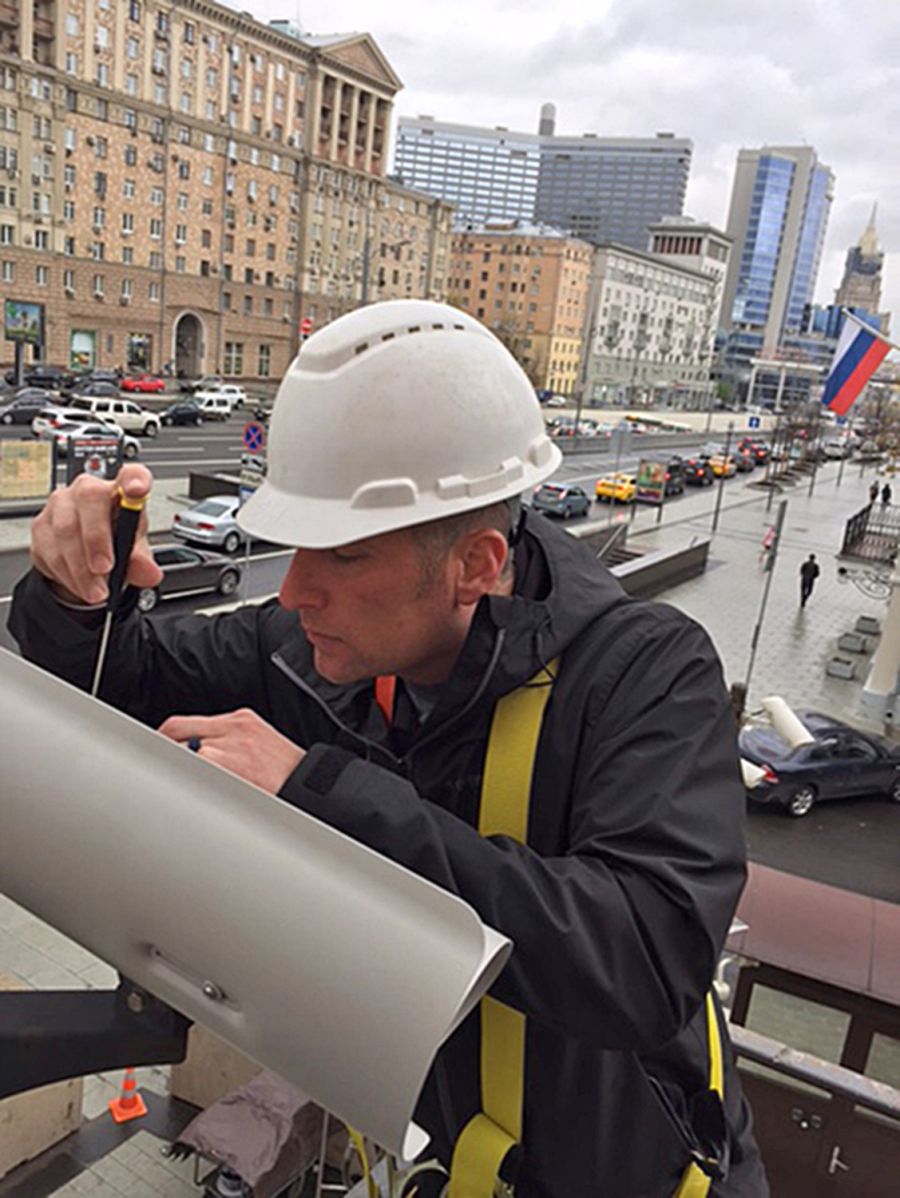An article from Stars and Stripes by Chad Garland presents a look at the Navy Seabees (aka Construction Battalions or “CB”) and their work in technical security, including protecting embassies from bugs and eavesdropping devices.
A military unit that helped secure U.S. diplomatic compounds for decades has seen its mission grow as security threats have escalated from bugs buried in embassy walls to car bombs driven up to embassy gates.
Perhaps the most widely known military defenders of U.S. embassies are Marines, but a small group of Navy Seabees, known as the Naval Support Unit – State Department, has played a largely behind-the-scenes role implementing technical measures to combat threats abroad since the 1960s.

A Navy Seabee upgrades a camera at the U.S. Embassy in Moscow, Russia, on May 16, 2017.
COURTESY OF U.S. DEPARTMENT OF STATE
The unit’s exploits are largely unsung outside the Navy’s Construction Battalions — the “C.B.” from which the name Seabee comes.
“You see the AFN commercials of the Marine with the rifle and he’s handsome, clean-shaved and protecting the embassy,” said Petty Officer 2nd Class Eric Millisor, a Seabee at the U.S. Embassy in Tel Aviv, Israel. “You never really know what the Seabees do.”
In short: Marines do physical security, Seabees do technical security.
In April 1966, in the heat of Cold War spy games, the Navy first formally committed Seabees to help the State Department combat Soviet spy technology. Before the end of the decade, they’d take part in a major transformation to combat terrorist attacks.
As embassies became more fortress-like, the Seabees’ focus expanded from interior walls out to compound perimeters, and from watching construction projects for bug-planting to maintaining systems that monitor for signs of potential violence.
“Back in the Cold War era, the threat was different, we were in that spy-versus-spy mentality,” said Chief Petty Officer Subrina Stallings, the unit’s operations chief. “Now we’re more so on that physical protection … those outer-layer defense areas first.”
The Navy’s construction battalions were first founded during World War II to build bases and clear airstrips, mainly in the Pacific theater. They were eventually tasked with building schools and hospitals as “goodwill ambassadors.”
Their embassy duty didn’t start until the early 1960s…
